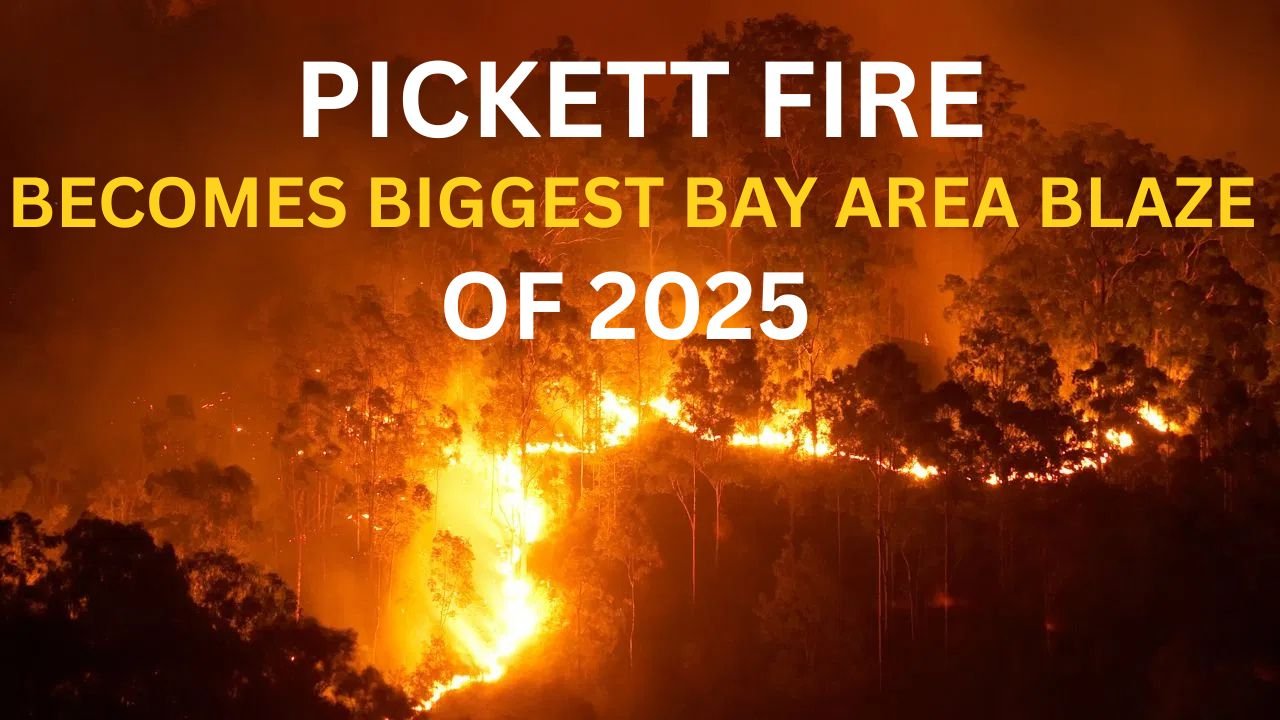Blog
Pickett Fire Becomes the Biggest Bay Area Blaze of 2025

The Bay Area faces one of its most intense wildfire challenges of the year. Specifically, the Pickett Fire, which erupted near Calistoga in Napa County, has rapidly grown into the largest wildfire of 2025, scorching more than 6,800 acres of land. Consequently, it has triggered emergency responses and heightened community concerns.
How the Fire Started and Spread
The fire started late last week in the rugged hills east of Napa Valley. Fueled by record-breaking heat, dry vegetation, and gusty winds, it spread at an alarming rate. Within 24 hours, the blaze doubled in size, which made it extremely difficult for firefighters to contain. Thus, officials quickly mobilized resources to tackle the threat.
Firefighting Efforts and Current Status
Over 1,200 firefighters, helicopters, and heavy machinery actively fight the flames. As of the latest update, firefighters have contained 11% of the fire, while teams continue working around the clock. Additionally, night-flying helicopters and improving humidity levels helped reduce the intensity in some areas. However, steep terrain and hot conditions still challenge firefighting efforts.
Evacuations and Community Impact
Authorities issued evacuation orders in Pope Valley, Aetna Springs, and parts of Silverado Trail. Fortunately, residents avoided injuries, and no homes have been destroyed so far. Nevertheless, smoke has severely impacted air quality across Napa, Sonoma, Solano, and even the East Bay, raising health concerns for vulnerable residents.
Threat to Vineyards and Economy
The Napa Valley region, famous for world-class wineries, faces ongoing threats. Several vineyards—including Sterling, Venge, and Hundred Acre—deal with fire dangers similar to the devastating 2020 Glass Fire. While no wineries have burned yet, the economic and tourism impact could escalate if the fire spreads further.
Environmental Concerns
The blaze adds to growing concerns about climate change in California. Prolonged droughts, heat waves, and dry lightning increase wildfire risks, making such events more frequent and intense. Therefore, experts stress the urgent need for better wildfire management and climate adaptation strategies.
Outlook Ahead
Weather forecasts predict cooler conditions and higher humidity later this week, which may help firefighters gain the upper hand. Nevertheless, the Pickett Fire reminds residents and authorities of the Bay Area’s growing wildfire vulnerability. As a result, officials continue monitoring the situation closely and advise residents to stay alert.
